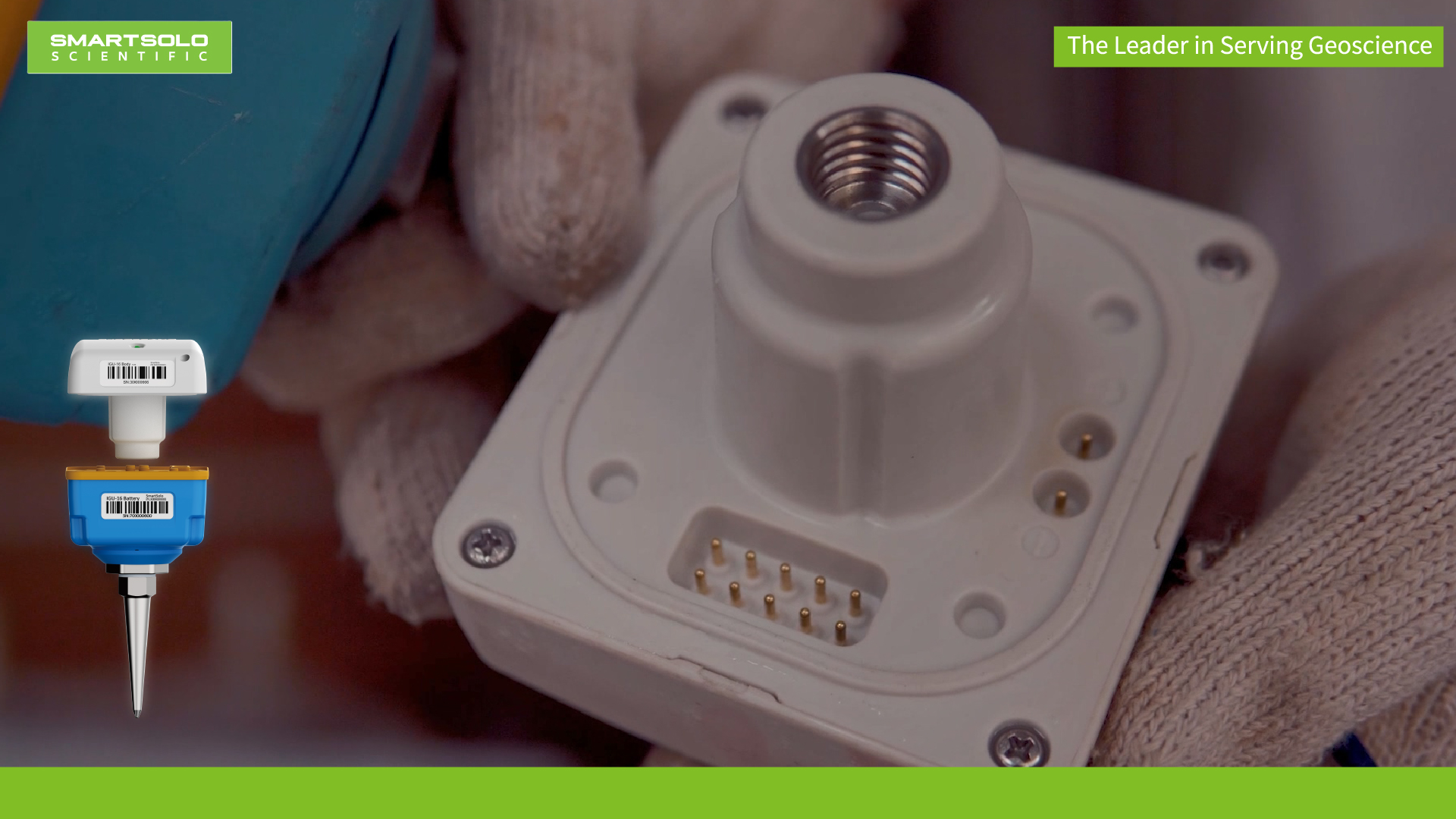Currently, dense array observations have emerged as a crucial tool in seismic research. Using short-period nodal seismometers for regional dense array observations allows for more precise acquisition of regional earthquake catalogs and a finer characterization of subsurface velocity structures. Short-period seismometers, known for their portability, cost-effectiveness, and efficiency, enable the possibility of large-scale, ultra-dense array studies.
In order to gain a deeper understanding of the signal response performance of short-period nodal seismometers, a research team from China University of Geosciences (Wuhan) recently conducted a comparative experimental study on instrument performance. Four SmartSolo IGU-16HR 3C short-period Seismic nodes were deployed at four observation points within the Hubei Seismic Network compared with the National Broadband Seismometer.
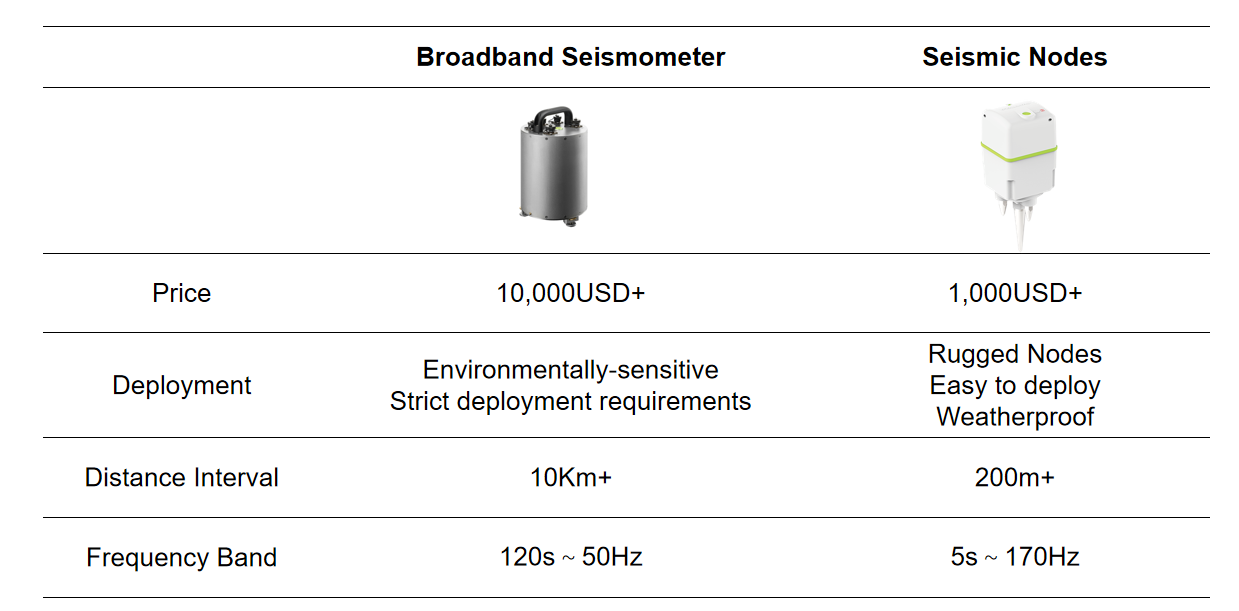
Experiment
➣Station Deployment:
Four observation points with national broadband seismometers in Hubei Province
Observation:
➣Duration:2022.2-2023.5
➣Sample Rate:100Hz
➣Instruments:National Broadband Seismometer、IGU-16HR3C 5Hz
Methods:
➣Comparison of Far-field P-wave absolute amplitudes
➣Comparison of P-wave receiver function amplitudes
➣Comparison of P-wave polarization values
➣Comparison of Ambient noise cross-correlation functions and Phase velocity dispersion curves
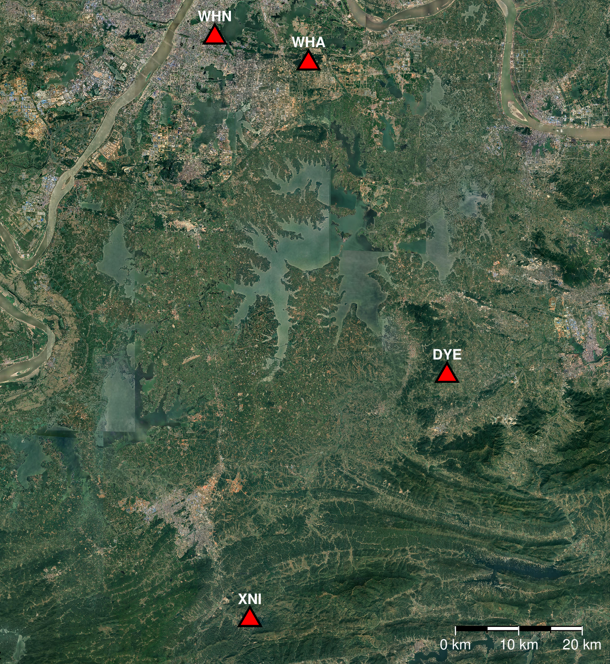
Through three months observation, the research team acquired a substantial volume of seismic data and arrived at the following research findings.
Far-field P-wave absolute amplitudes
Filter: 2-3Hz、1-3Hz、1-2Hz、0.5-1Hz、0.1-0.5Hz
Station and Events distribution
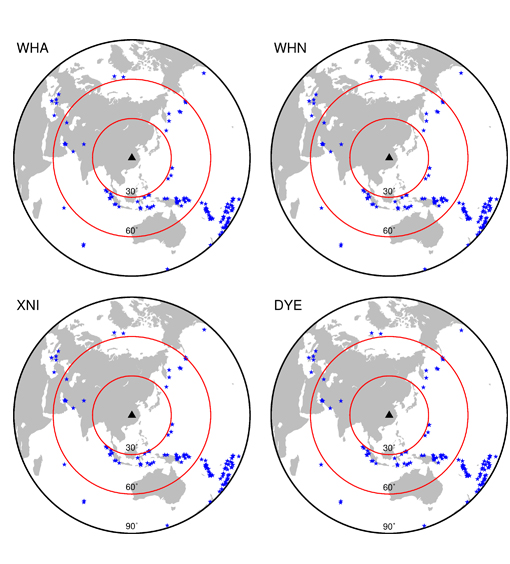
Comparison of far-field P-wave absolute amplitudes across different frequency bands National Broadband Seismometer (Red) vs. IGU-16HR3C 5Hz (Blue)
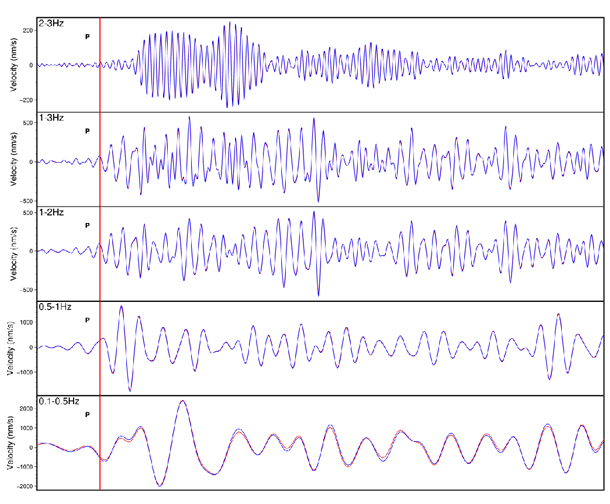
The far-field absolute amplitude of P-waves recorded by the IGU-16HR3C 5Hz maintaining good consistency with the National Broadband Seismometer even at a corner frequency of 0.1Hz. The time offset between the two instruments was within 0.02 seconds.
P-wave receiver function
Parameter:
➣Filter:0.05-3Hz
➣Window:-10s – 80s
➣Gaussian filter factor:5(2.4Hz)
QC:
➣Cross-correlation factor:0.6
➣Window:-10s – 100s
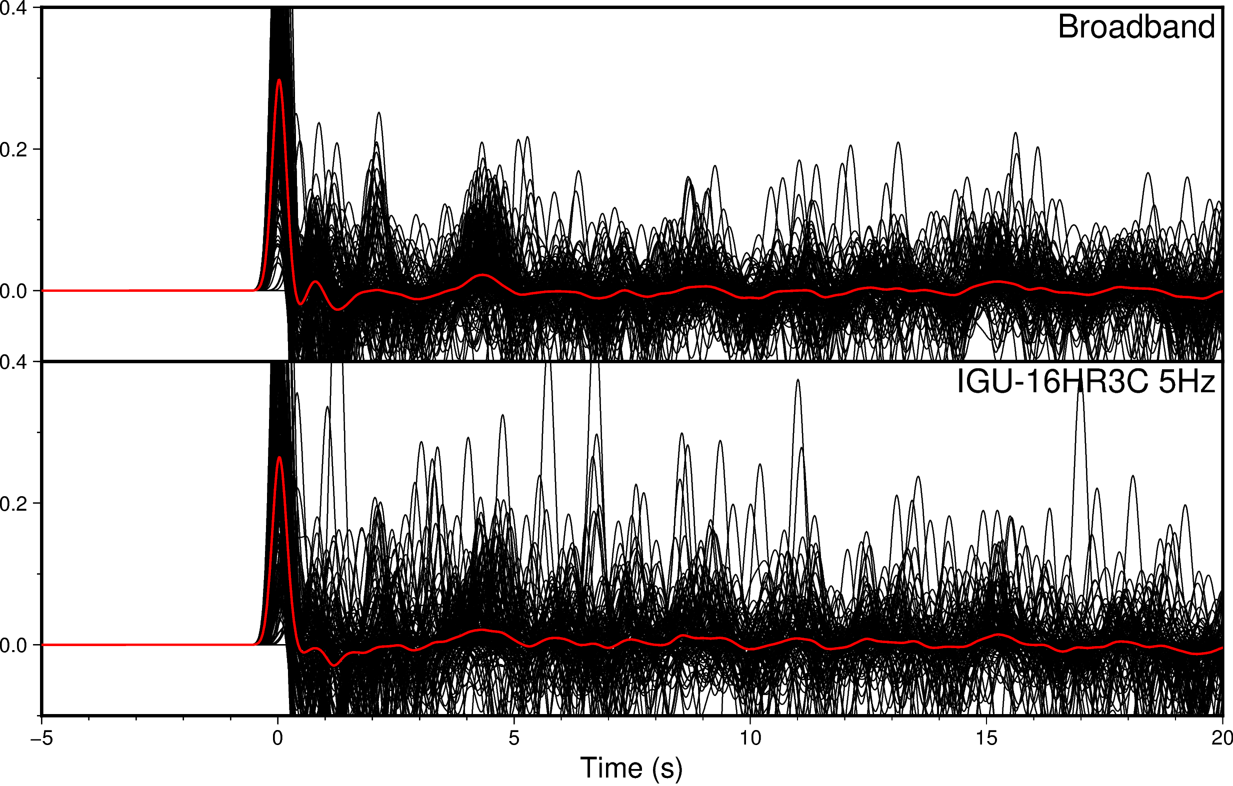
Quality control of cross-correlation for XNI station receiver functions Receiver function (Black); Stacked averaged receiver function (Red)
Comparison of P-wave receiver functions
National Broadband Seismometer (Red) vs. IGU-16HR3C 5Hz (Blue)
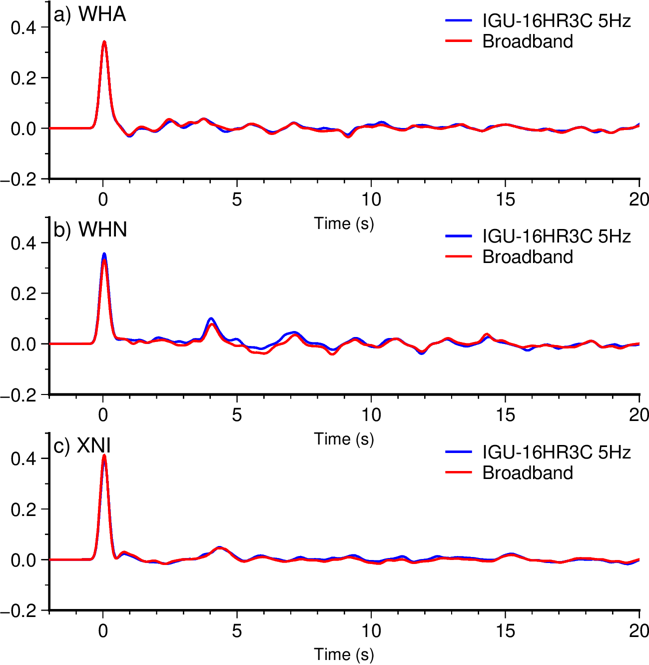
The standard deviation of P-wave receiver functions from two instruments
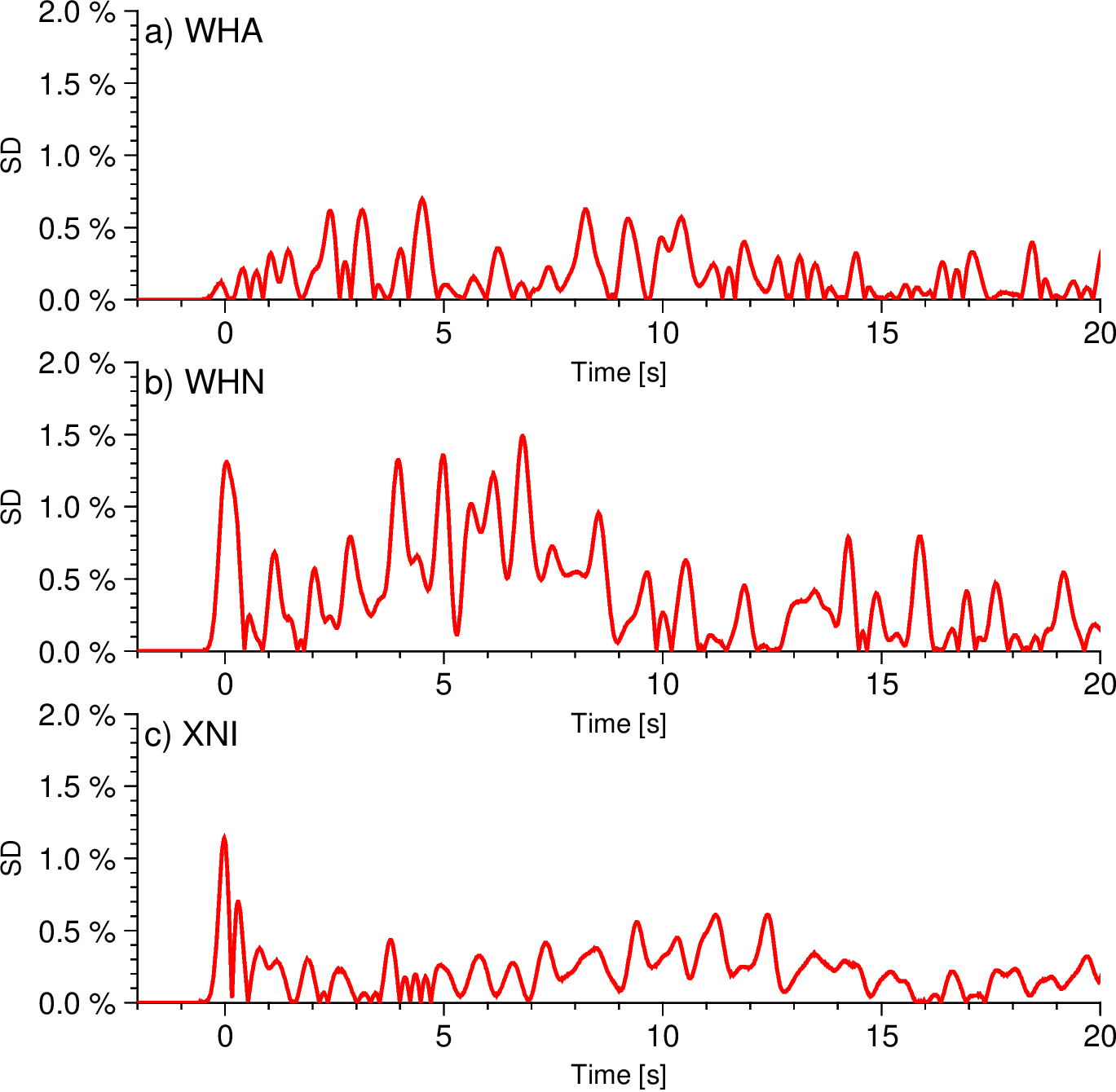
The far-field P-wave receiver functions extracted from the IGU-16HR3C 5Hz maintaining good consistency with the National Broadband Seismometer within the frequency range of 0.05 to 3Hz. The Amplitudes and Phases exhibit substantial similarity, with a standard deviation of less than 2% between the two devices.
P-wave polarization
Parameter
➣Filter:0.05-3Hz
➣Window:-10s – 80s
➣Polarization calculation period :0s - 6s
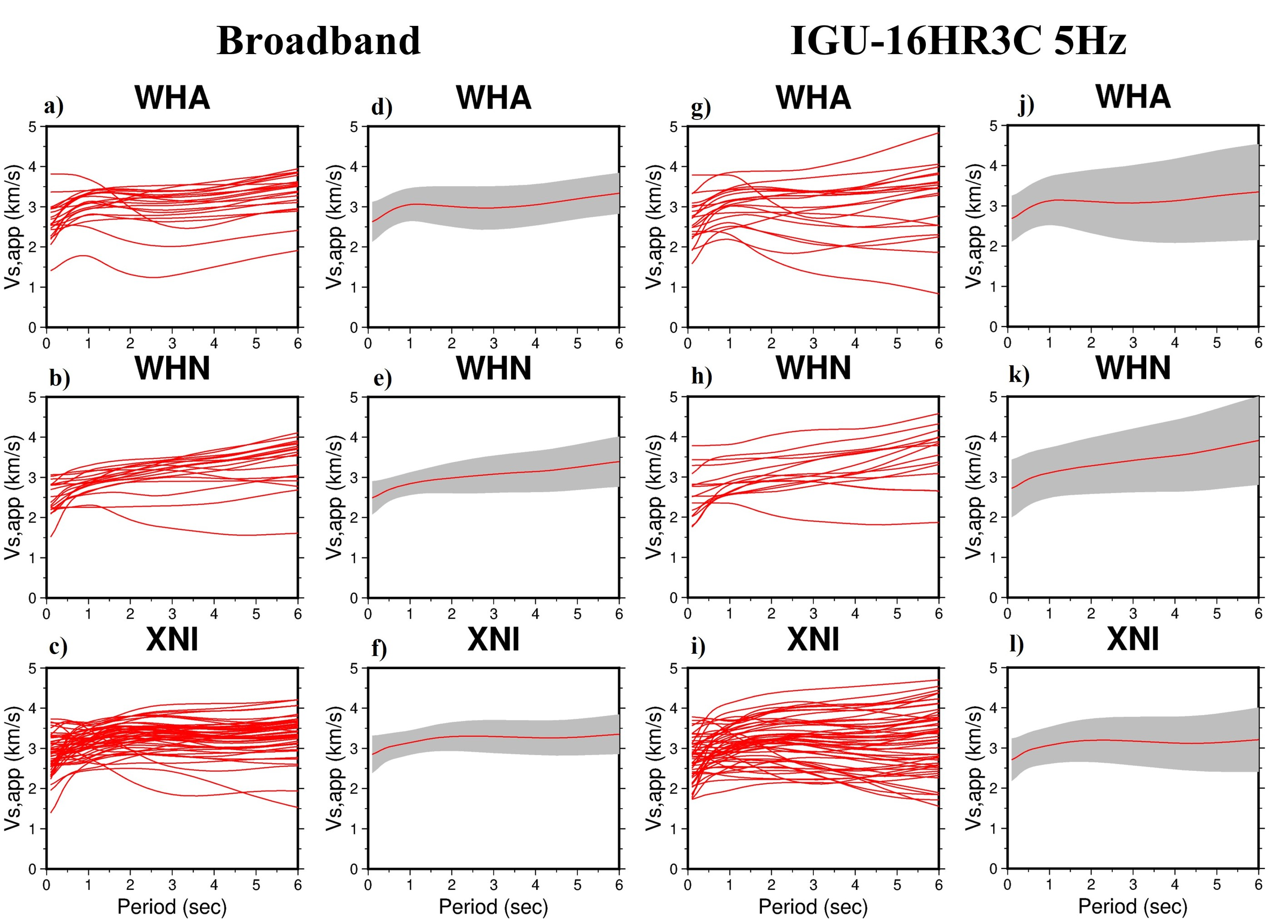
Figures a - c: The apparent S-wave velocity variations for all events recorded by the National Broadband Seismometer;
Figures d - f: The apparent S-wave velocity variations after stacking averaging by the National Broadband Seismometer;
Figures g - i: The apparent S-wave velocity variations for all events recorded by the IGU-16HR3C 5Hz;
Figures j - l: The apparent S-wave velocity variations after stacking averaging by the IGU-16HR3C 5Hz.
Comparison of apparent S-wave velocity variation curves
National Broadband Seismometer (Red) vs. IGU-16HR3C 5Hz (Blue)
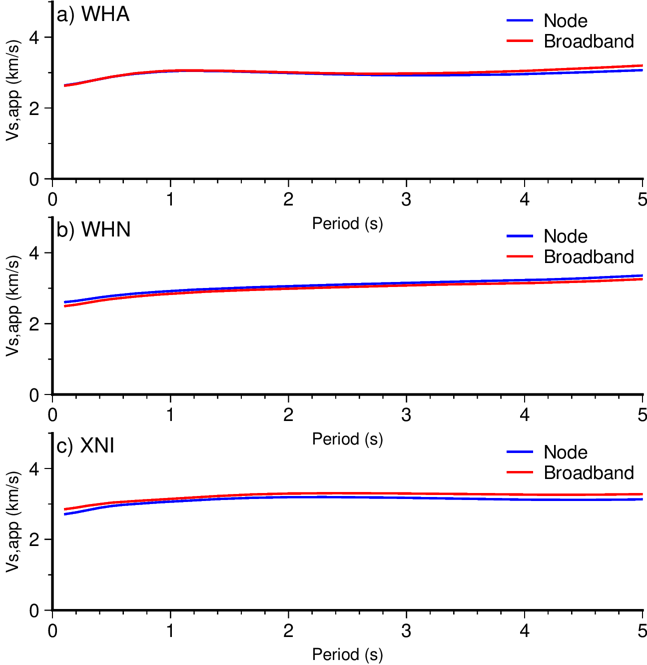
The standard deviation of S-wave velocity variation from two instruments
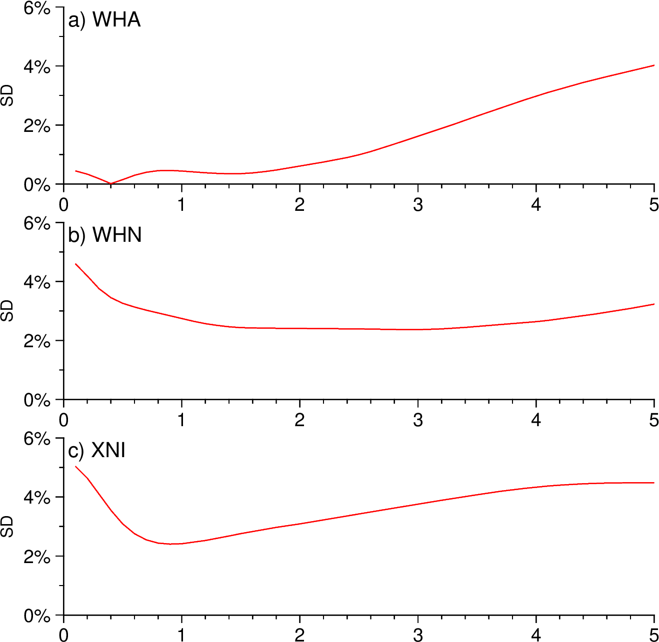
The apparent S-wave velocity curve from the IGU-16HR3C 5Hz remains consistent with the National Broadband Seismometer within the 0s-6s frequency range. The difference between the two instruments does not exceed 0.1 km/s, with a standard deviation of within 6%.
Ambient noise
cross-correlation functions
Cross-correlation functions of ambient noise data for six station pairs
National Broadband Seismometer (Red) vs. IGU-16HR3C 5Hz (Blue)
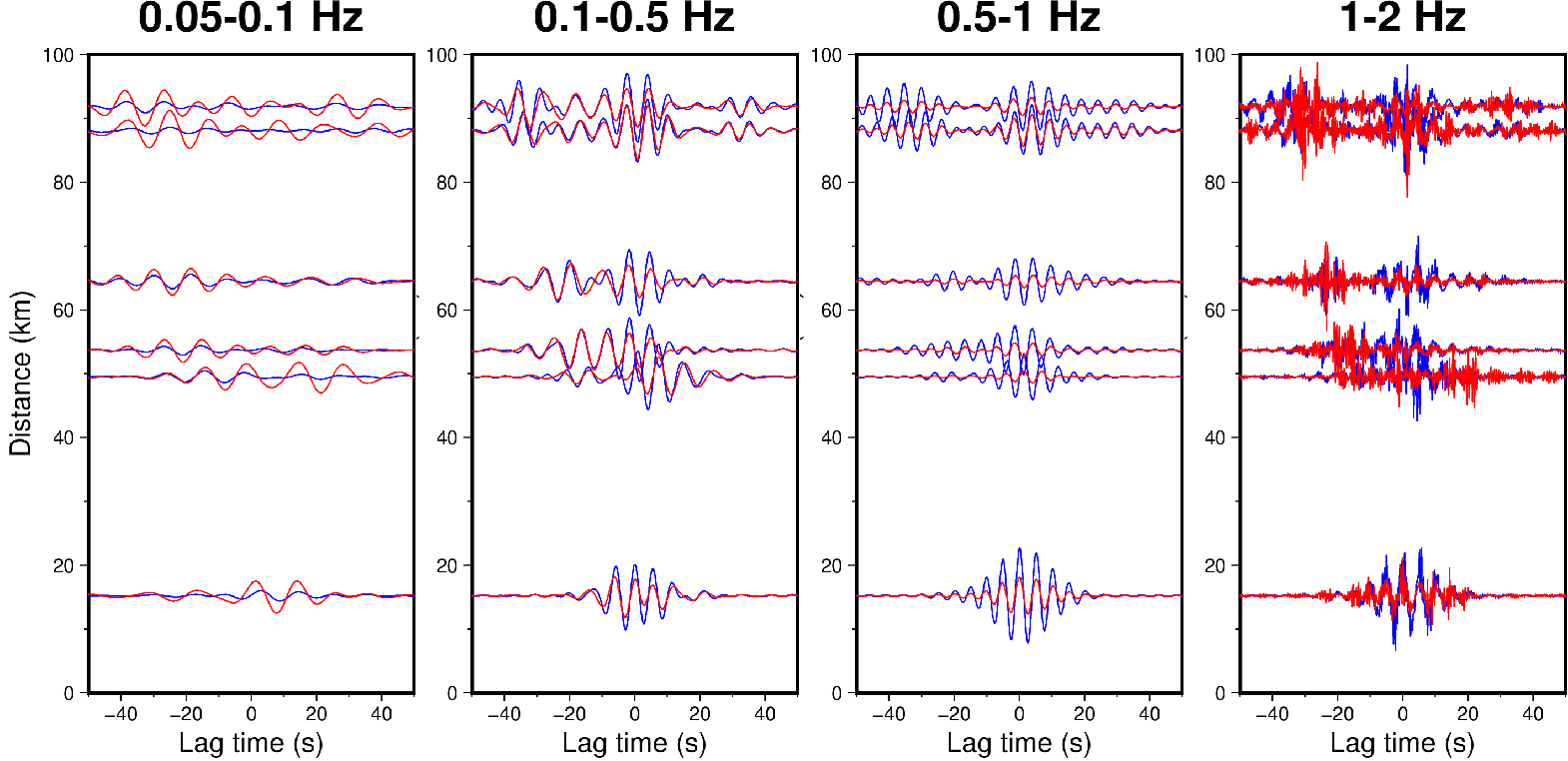
The Ambient noise cross-correlation functions computed by the IGU-16HR3C 5Hz exhibit good consistency with the National Broadband Seismometer within the 0.1-0.5Hz range.
Phase velocity dispersion curves
National Broadband Seismometer and IGU-16HR3C 5Hz (Scatter plots)
Reference phase velocity curve for the region (Blue)
National Broadband Seismometer and IGU-16HR3C 5Hz (Scatter plots)
Reference phase velocity curve for the region (Blue)


The phase velocity dispersion curves extracted within 20 seconds by the IGU-16HR3C 5Hz demonstrate a good consistency with those obtained from the National Broadband Seismometer.
Conclusion
➣The far-field absolute amplitude of P-waves recorded by the IGU-16HR3C 5Hz maintaining good consistency with the National Broadband Seismometer even at a corner frequency of 0.1Hz. The time offset between the two instruments was within 0.02 seconds.
➣The far-field P-wave receiver functions extracted from the IGU-16HR3C 5Hz maintaining good consistency with the National Broadband Seismometer within the frequency range of 0.05 to 3Hz. The Amplitudes and Phases exhibit substantial similarity, with a standard deviation of less than 2% between the two devices.
➣The apparent S-wave velocity curve from the IGU-16HR3C 5Hz remains consistency with the National Broadband Seismometer within the 0s-6s frequency range. The difference between the two instruments does not exceed 0.1 km/s, with a standard deviation of within 6%.
➣The background noise cross-correlation functions computed by the IGU-16HR3C 5Hz instrument exhibit good consistency with the National Broadband Seismometer within the 0.1-0.5Hz range. Moreover, the extracted phase velocity dispersion curves within 20 seconds also demonstrate a consistent pattern between the two.
Positioned as an economical, streamlined, and efficient seismic observation tool, the short-period nodal seismometer demonstrates vast potential for broad application in seismic research and earthquake forecasting. With continual advancements in research methodologies and analytical techniques, we are confident that the short-period nodal seismometer will assume a crucial role in the future of seismology, driving significant breakthroughs in the field.

